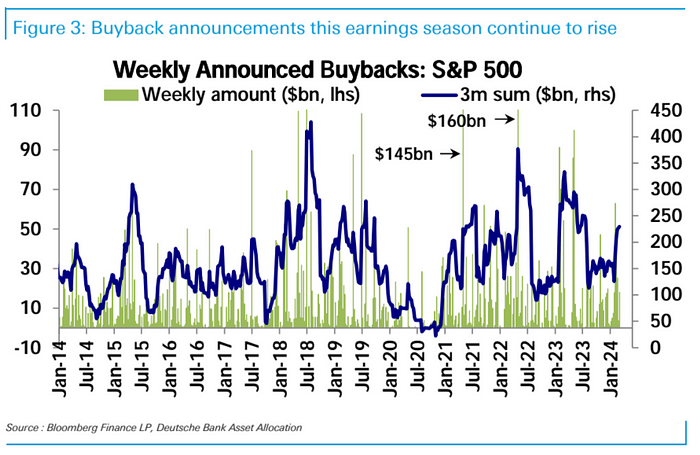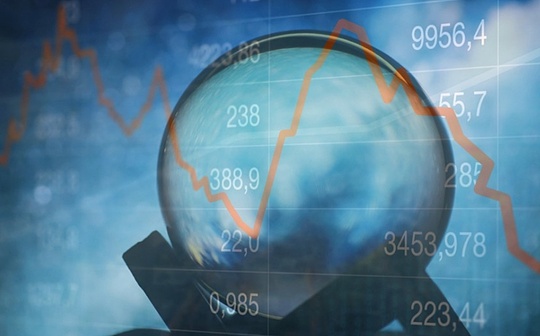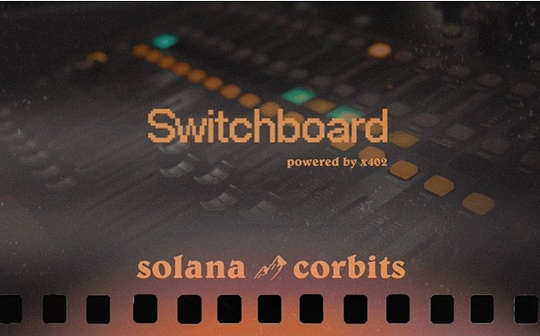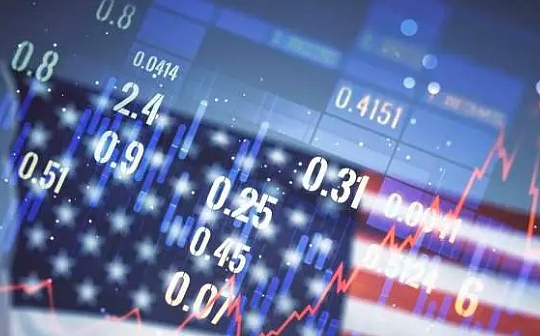
Source: LD Capital
As can be seen in February, stocks could perform well in this environment if the reason for the rise in bond yields was positive (strong economic growth rather than the Fed’s interest rate hike).Despite rising interest rates, the S&P and Nasdaq rose by about 5% last month, and global stock markets also hit record highs, with several major global stock indexes hitting record highs, including Germany, France and Japan.Chip stocks rose sharply, NVIDIA rose 30%, AMD rose 20%, and Broadcom and TSMC rose 17%.The logic of chip stocks is still the closer they are to the upstream of the AI industry chain, the more they have risen. As for downstream software companies, especially big technologies, the performance is average. For example, Google fell 4% in the past month, Apple fell 2.4%, Microsoft rose 3%, and Meta is 500Yiyi repurchase rose 27%.Crude oil prices rose slightly, WTI approaching $80.The US dollar index rose first and then fell basically flat.Bitcoin and Ethereum rose nearly 50%.
Unlike the several periods when the rise in yields triggered a pullback in stock markets and cryptocurrencies last year, global stock markets were able to firm and rise with short- and long-term interest rates rising again, for three main reasons: 1) strong corporate earnings performance in the fourth quarter;2) NVIDIA’s prospects have sparked new enthusiasm for artificial intelligence; 3) Strong economic growth.
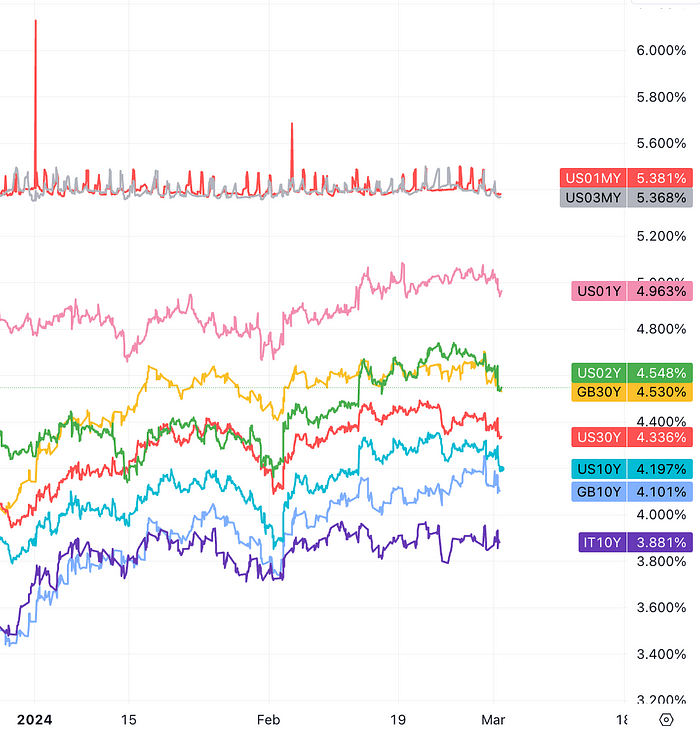
The weak U.S. economic data released on Friday and the Fed’s speeches have heated up market expectations of monetary easing, and U.S. Treasury yields have plunged significantly.The US ISM manufacturing index unexpectedly fell to a seven-month low of 47.8 in February, shrinking for 16 consecutive months, with new orders and employment shrinking.
Fed governor Waller (the next popular candidate for Fed chairman) hinted that it would implement a reverse “reversal operation” (QT), which means that the Fed should “buy short and sell long” on its balance sheet.He also hopes to see the Fed’s holdings drop to zero and the proportion of short-term debt on the balance sheet increase.Waller’s speech implies that Fed hopes to reduce short-term bond yields, that is, interest rates closer to the money market should be reduced, which is a dovish signal, and to a certain extent, it can alleviate the inverted yield curve.
Before the global financial crisis, about one-third of Fed’s portfolio was short-term Treasury bonds.Nowadays, the scale of short-term treasury bonds is less than 5% of the treasury bond holdings.
During the same day’s event, Dallas Fed Chairman Lowry Logan once again stressed that the Fed may start to slow down its balance sheet shrink as bank reserves fall.U.S. bonds and gold rose sharply, and U.S. stock index hit a record high.
As for whether the recent rise is overheating, history shows that the market has not yet entered an overheating state, but the rate of growth may slow down and volatility may increase.
The current bull market’s first 16-month gains (42%) are below average (50%) compared to the last 12 bull markets.(This kind of statistics is not applicable in the currency circle)
If the Federal Reserve policy gradually relaxes monetary policy in the future, it will be conducive to economic expansion and drive further rise in risky assets.”The Fed’s rate cut is inspiring the ‘animal spirit’ and promoting the development of risky assets,” Bank of America wrote in a comment last week.
However, the stock market will not rise forever.When investors’ sentiment is too optimistic, the market often becomes more volatile.Although investor sentiment has turned optimistic, it has not reached an extreme level yet.Investors should maintain reasonable expectations of returns and volatility, with an average of three 5% corrections and a 10% correction each year on average.
All About Bitcoin
Ten spot Bitcoin ETFs are arguably one of the most successful financial products in history, with trading volume and capital inflows hitting record highs last week.Total net inflows reached US$7.35 billion.BlackRock’s IBIT reached the $10 billion asset mark in just seven weeks, the fastest ETF to reach this figure and surpassed the largest silver ETF.

The first net outflow in seven trading days Friday occurred, mainly due to the sharp outflow of nearly $1.1 billion for two consecutive days. The market speculated that the main reason behind the sale may be due to the repayment of lender Genesis.Genesis received bankruptcy court approval on February 14 to sell 35 million GBTC shares (then worth $1.3 billion and now about $1.9 billion), but GBTC’s outflows have not been much in the past two weeks until it surged on Thursday.However, this selling pressure seems to have been digested by most of the time.
At present, we can expect large institutions to “surrender” one after another.
Matt Hougan, chief investment officer of Bitwise, said the current demand is mainly from retail investors, hedge funds and independent financial advisers.He expects demand for spot Bitcoin ETFs to increase further as larger U.S. brokers begin to participate.Because some of the largest U.S. banks include Bank of America, Wells Fargo, Goldman Sachs and JPMorgan Chase, but these banks have not yet provided BTC ETFs to their clients.

It is not clear whether the excitement surrounding Bitcoin is sucking away money from gold, but there does seem to be some disconnect between the price trend of gold and the investment level, which has been going on for more than a year.Historically, gold prices and gold-backed ETF holdings have been trading synchronously, but starting in 2023, the two have begun to decouple as shown below.This may be caused by a variety of factors, including changes in investor sentiment, monetary policy, portfolio balance, currency fluctuations, etc.

Bitcoin is the best choice for investors with long investment cycles or high risk appetite, with volatility about eight times that of its kind.The 10-day standard deviation of precious metals is ±3%, while the 10-day standard deviation of Bitcoin is ±25%.
The drivers of gold prices seem to have changed in recent months.For decades, gold has been inversely related to real interest rates — when yields fall, and vice versa — but this pattern has been broken since the outbreak of the epidemic in 2020.In the 20 years before Covid, gold and real interest rates had a highly negative correlation coefficient.Since then, however, the correlation has turned positive, and both assets now often move in the same direction.
It is currently generally believed that the central bank’s purchasing activities are the new driving force for gold.Since 2010, financial institutions (primarily emerging economies) have been net buyers of metals to support their own currencies and achieve de-dollarization.
Edward Snowden shared his forecast for 2024 that the state government will be found secretly buying bitcoin, which he called “a modern alternative to gold”
Currently, only the El Salvador government has voluntarily purchased Bitcoin in its country, and currently holds 2,381 Bitcoins in its treasury, which is currently a 40% profit from the purchase cost.
According to intotheblock statistics, more than 97% of Bitcoin addresses have achieved profitability, setting the highest profit level since November 2021.
The last time we observed such a large percentage of profit addresses, Bitcoin was around $69,000, close to its all-time high.
But it is obviously meaningless to look at it this way. When the price at the end of each bull market, the profit ratio is definitely high. We should pay more attention to the changes in the profit ratio at the beginning of each bull market.

In January 2013, the BTC price was 14, the previous high was 23, and the profit ratio returned to more than 90% for the first time after 17 months, and the next high increased by 40 times.
In June 2016, the BTC price was 716, the previous high was 1,100, and the profit ratio returned to more than 90% for the first time after 31 months, and the next high was 28 times.
In August 2020, the BTC price was 11,500, the previous high was 19,500, and the profit ratio returned to more than 90% for the first time after 32 months, and the next high was 4.5 times
In February 2023, BTC price was 51,000, the previous high was 69,000, and the profit ratio returned to more than 90% for the first time after 27 months. The increase to the next high?Double
It can be seen that when the BTC price reaches about 60-70% of the previous high, the profit ratio will rise to more than 90%. At this time, the selling pressure of users trying to recover will no longer have a significant impact. In theory, the bull market will go.It’s smoother.
Moreover, from the past three historical points, after hitting the 90 profit threshold for the first time, it will touch this area many times as the price continues to rise.
However, the price increase after the past three touches has shown a decreasing state, and it is normal as the market matures.
According to the fitting of the index decay model, the maximum increase after hitting 90% in this round was 390%, and the price was around 250,000 with a benchmark high of 51,000.
Pay attention to the April callback
JPMorgan analysts released a report last week predicting that the Bitcoin halving in April may lead to a decline in miner profitability, coupled with an increase in production costs, may put downward pressure on the price of Bitcoin.
Historically, the cost of production of Bitcoin has been a key determinant of its price lower limit.The average production cost of Bitcoin is currently $26,500 per coin, and will immediately double to $53,000 after halving.However, network computing power may drop by 20% after halving, so the estimated production costs and prices may be reduced to $42,000.This price is also the lowest point for JPM to predict that BTC may pull back.

Especially miners with higher production costs are facing significant pressure due to their expected decline in profitability.The closer the halving, the gains of miners’ stocks may be more suppressed.
Meme Coin Riot and Copy Season
Bitcoin has led the development of cryptocurrencies this year, but altcoins may soon start to outperform.
Dog-themed tokens DOGE and Shiba Inu (SHIB) rose 50% to 100% last week, while new MEMEs such as PEPE, BONK and Dogwifhat (WIF) rose 100% to 200% during this period.
The “huge” MEME currency rebound last week could be an “early sign” of the upcoming altseason.However, what is different from before is that funds are mainly driven by institutions, and there is no guarantee that funds flowing to Bitcoin will eventually flow to smaller assets.However, as the price of mainstream coins rises, it may drive the risk preference of existing funds, and this part of the money will likely flow to more risky assets, which is due to human nature.
Some analysts pointed out that to confirm altseason, the key signal that needs to be looked for is that ETH breaks through the $3,500 price threshold.
Will VC return to cryptocurrency?
Venture capital in crypto startups has increased for the first time since March 2022, reaching $1.9 billion in the fourth quarter of 2023.According to a recent PitchBook report, this figure rose 2.5% from the third quarter.
Several startup projects have announced financing in the past month, including Lava Protocol, Analog, Helika, Truflation and Omega.A16z announced a $100 million investment in Ethereum’s restating protocol, EigenLayer.Binance Labs announced a total investment of $3.2 million in its seed round in January.
Avail announced a $27 million seed round led by Founders Fund and Dragonfly.Venture capital firm Hack VC has raised $150 million to invest in early-stage cryptocurrencies and AI startups.
AltLayer, a re-staking rollups project, received $14.4 million in strategic financing, led by Polychain Capital and Hack VC.
Digital asset trading platform Ouinex raised over $4 million from the community through seed and private equity rounds.
PredX, a forecast market supported by artificial intelligence (AI), raises $500,000 in pre-seed funding
Fund flow
Equity funds ushered in strong inflows ($10 billion) for the sixth consecutive week, with a total inflow ($84 billion) the highest in two years.Among them, US stock funds (US$11.3 billion) are the main source of inflows.Technology fund inflows ($4.7 billion) also rose to its highest in six months.Bonds ($13.8 billion) and money market funds ($38.7 billion) also recorded strong inflows.Inflows into tech stocks, including big companies such as Apple and Nvidia, reached $4.7 billion, the highest level since August and is expected to hit an annual record of $98.8 billion.
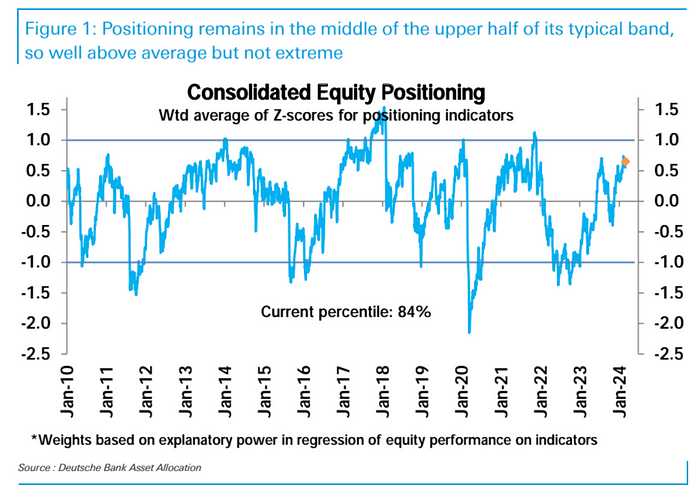


The repurchase strength rose from the $150 billion level per quarter to $225 billion.
